Last Updated on March 23, 2024 by Vinson Lozano
As a bicycle enthusiast, one of the most important parts of your ride is the braking system. And when it comes to upgrading your bike’s performance, one of the most debated topics is floating vs fixed brake rotors.
Both have their advantages, but which one is right for you? In this article, we’ll take a closer look at the differences between the two and help you decide which one would best suit your riding needs.
Whether you’re a casual rider or a seasoned racer, read on to learn more about the pros and cons of fixed and floating brake rotors.
Explanation of brake rotors
Brake rotors are an essential component of your bike’s braking system, vital for stopping your bike effectively and safely. They’re the circular metal discs that are squeezed by the brake pads, prompting a frictional coating that slows down your bike.
But there are two types of brake rotors: fixed and floating. Fixed rotors work by attaching to your wheel’s hub carrier and remain stationary.
Floating rotors, on the other hand, include an outer rotor ring and a central hub that can move slightly. This slight movement optimizes contact with the brake pad and reduces heat transfer between the rotor and hub, which can help improve brake efficiency and performance.
Importance of choosing the right brake rotor
Choosing right brake rotor is crucial when it comes to the safety and performance of your bike. Whether you opt for a fixed or floating rotor depends on your riding style and preferences.
Fixed rotors are more affordable and can provide reliable braking power in most riding conditions. However, if you’re looking for the most stopping power and consistent performance, a floating rotor is the way to go.
It allows the rotor to float independently from the carrier, providing maximum rotor-to-pad contact and better heat isolation. When it comes down to it, choosing the right brake rotor for your bike is a personal choice that should be based on your individual needs and preferences.
Fixed Brake Rotors
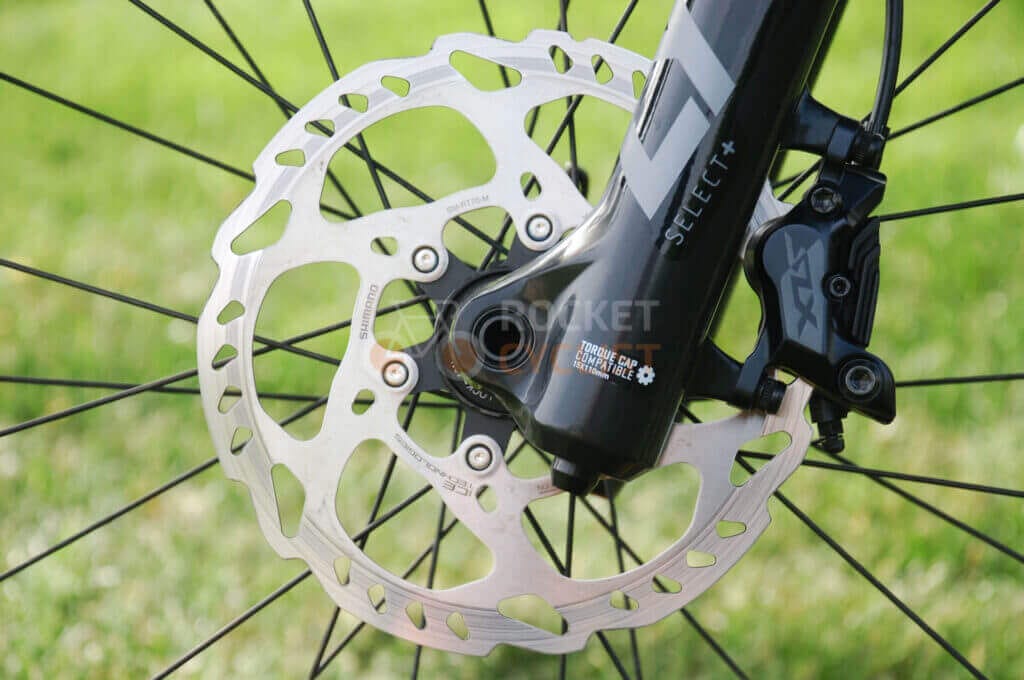
Brake rotors are an essential part of any bike’s braking system and there are two types of brake rotors: fixed and floating. Fixed brake rotors are cut from a single piece of steel and are more affordable compared to a floating rotor.
On the other hand, floating rotors are designed with a rotor blade and carrier that are connected by rivets. This allows the rotor blade to move independently from the carrier, providing better stopping power and consistent performance.
It also helps to isolate heat, reducing the likelihood of heat-soaked rotors. However, debris can get into the buttons of the rotor, compromising the effectiveness of the floating system. It is important to choose the right type of brake rotor based on your biking needs and budget.
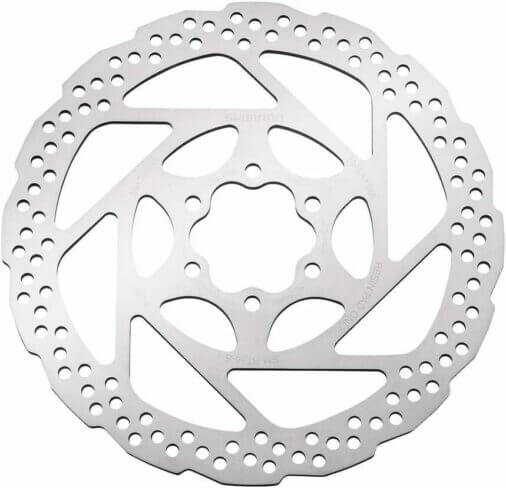
SHIMANO 180mm Bicycle Disc Brake Rotor – SM-RT56
Cost comparison with floating rotors
When it comes to cost, fixed rotors are definitely the more affordable option. They’re made from one piece of steel and don’t require additional parts like buttons or carriers.
This means they’re easier and cheaper to manufacture. However, floating rotors offer a range of benefits in terms of stopping power, consistent performance, and heat isolation that make them worth the extra cost for many riders.
When choosing between fixed and floating rotors, it’s important to consider not only price but also the specific needs of your bike and riding style. Don’t just go for the cheapest option – invest in high-quality brakes that will keep you safe and in control on the road.
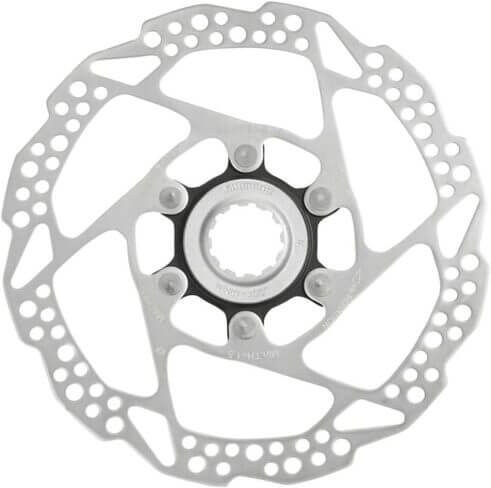
SHIMANO Centerlock 160mm Bicycle Disc Brake Rotor
Floating Brake Rotors
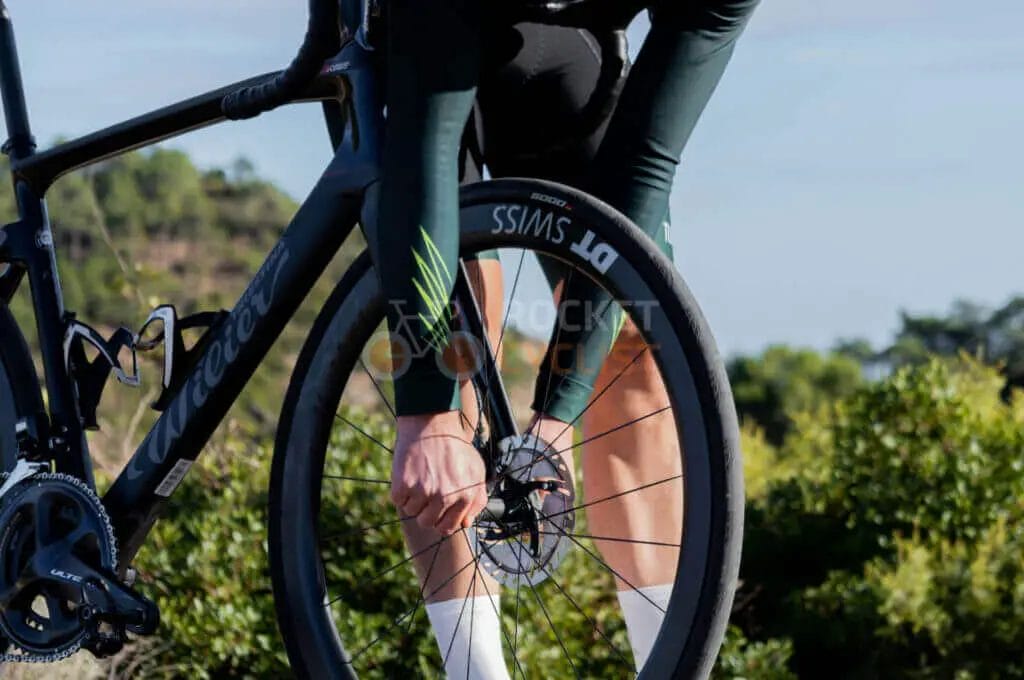
A rotor is a crucial component in a motorcycle’s braking system, responsible for stopping the bike by converting kinetic energy into thermal energy. Most standard brake rotors are called fixed, made of one solid piece of steel cut or stamped into a disc.
However, floating rotors are considered a higher performance option, allowing the rotor blade to float independently of the carrier. This design allows for more consistent and predictable braking, providing maximum rotor to pad contact. Floating rotors are available in different sizes such as 140mm, 160mm, 180mm, 183mm, 200mm, 203mm and 205mm.
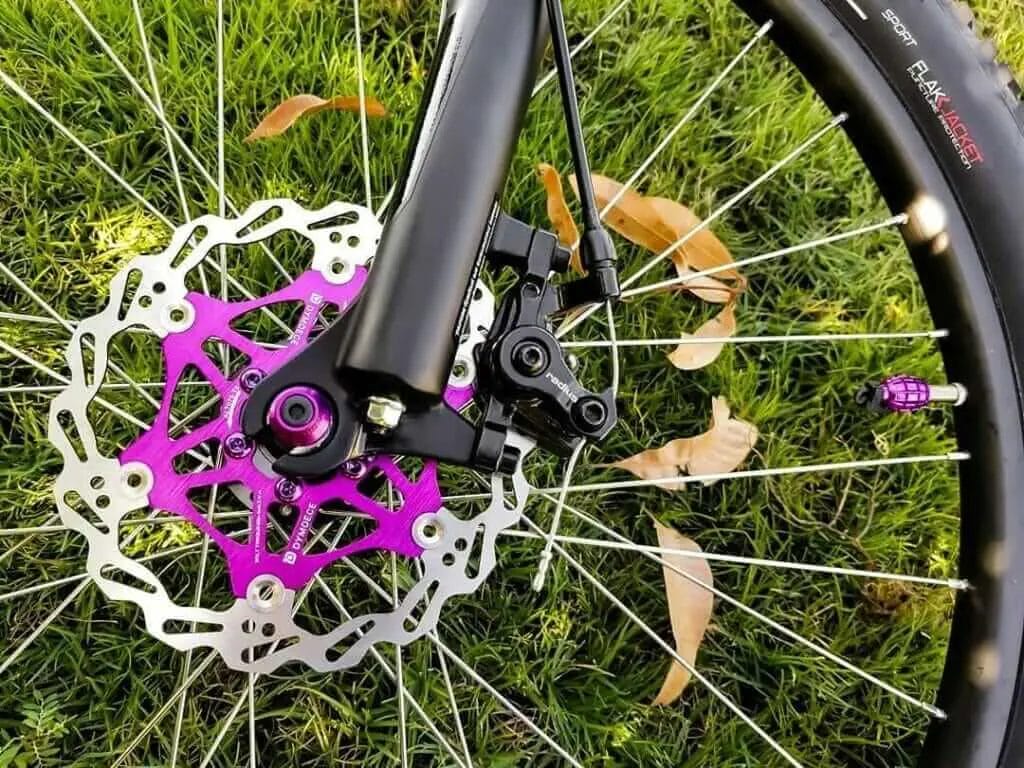
D Dymoece Bicycle 160mm Floating Disc Brake Rotor for MTB, Road, Gravel
Additionally, floating rotors provide heat isolation to reduce the likelihood of heat-soaked rotors that can compromise performance. Despite the cost difference between a fixed rotor and a floating rotor, riders who want the most stopping power often choose the latter.
Benefits in terms of stopping power and consistent performance
When it comes to brake rotors, choosing the right type can make a big difference in terms of stopping power and consistent performance. Floating brake rotors, in particular, have some unique benefits that set them apart from fixed rotors.
With their ability to float independently of the carrier, floating rotors conform to the brake pads and provide maximum rotor to pad contact, leading to more consistent and predictable braking.
Additionally, floating rotors better manage heat buildup, keeping it isolated to the friction blade rather than the entire rotor. This not only reduces the likelihood of heat-soaked rotors but also increases the braking system’s overall heat management capacity.
Overall, choosing floating brake rotors can be an excellent investment for riders seeking maximum stopping power and consistent performance.
Heat isolation and reduction of heat-soaked rotors
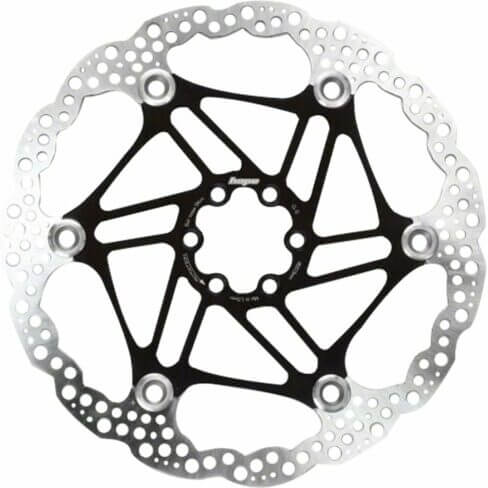
Hope Floating Disc Rotor: 160mm Black for MTB, Road, Gravel
One of the biggest advantages of using floating brake rotors over fixed ones is their ability to manage heat. During braking, heat is generated and if it cannot be dissipated effectively, the braking performance can suffer.
With floating rotors, less heat is transferred from the braking surface to the carrier, which means less heat is maintained in the entire rotor. This helps to isolate the heat buildup to the friction blade.
Additionally, floating rotors dissipate heat better, which helps to reduce the likelihood of having heat-soaked rotors. This is important because in extreme cases, the heat can cause the rotor to warp, which in turn can lead to a loss of braking power.
With heat isolation and reduction of heat-soaked rotors, riders can maintain consistent and effective braking performance even during highly demanding situations.
Potential issues with debris
One potential issue with floating brake rotors is the accumulation of debris in the buttons or bobbins that keep the rotor and carrier together. This can compromise the effectiveness of the floating system and cause the brake to feel less responsive.
However, solid brake rotors are not immune to debris either. Mud, dirt, and sand can also get caught in the rotor’s surface, reducing the friction between the brake pads and rotor.
It is important to keep both types of rotors clean and clear of debris to ensure maximum stopping power. Regular maintenance and cleaning can help prevent potential issues and keep your brakes functioning optimally.


